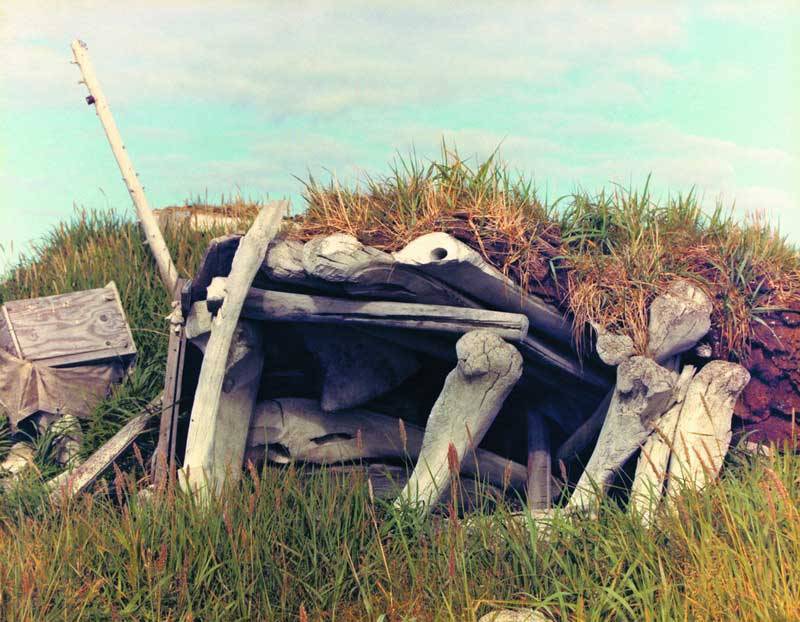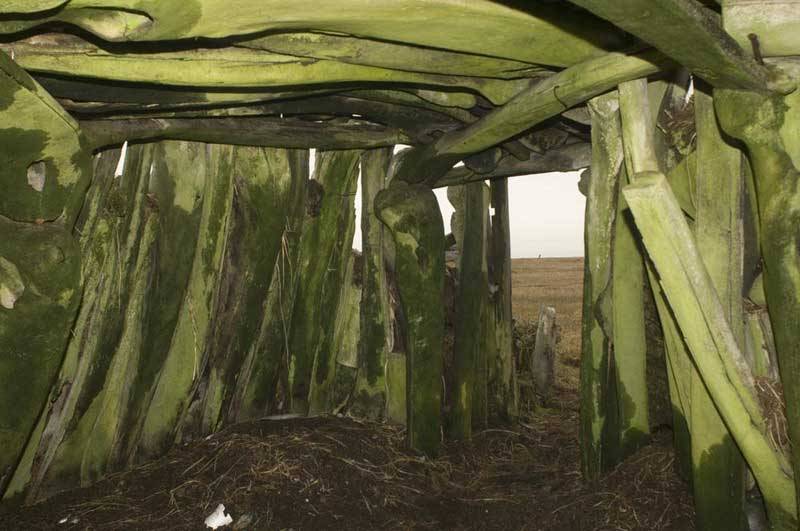V 30 |
Chukchi valkaran |
type |
|
place |
|
population |
The Chukchi (or Chukotka) peninsula holds several meteorological records, for greatest number of hurricanes, the highest wind speed and the longest period without sunshine. It is minus 60 degrees in winter and can be plus 5-10 degrees in summer.
Some of the Chukchi people who live here are nomadic reindeer herders and the rest fish and hunt sea mammals and are settled in the coast regions. Their lighting is provided by seal blubber lamps or open fires, their waterproof coats are made of walrus gut and their summer dwellings are made of whale bones. They learnt this technique from the Inuitok (Eskimos) from the opposite side of the Bering Strait just 86 km away, which freezes over from November to May.
Without wood or stone the Chuchki build their huts out of what was available: the valkaran was half scooped out of the earth, with a frame of whale jawbones and ribs onto which soil and turf was piled. The huts were generally square in plan with a domelike elevation and the floor inside was strewn with bones and twigs. A fire was lit in the middle of the floor which they slept around. The smaller of the huts were 4-5 metres long, but large families could build 15-25 metre long valkarans. Entrance in summer was through hole left in the roof to let the smoke out, in winter it was through a tunnel.
By the 20th century valkarans were no longer being built and today there are barely any traces of them left. The coastal Csukcsi have either moved into towns or live in animal hide covered tents (jaranga) like their nomadic brethren.
The picture shows the ruins of a winter residence of the Inuits from the other side of the Bering Strait. (Point Hope, AK, US).

